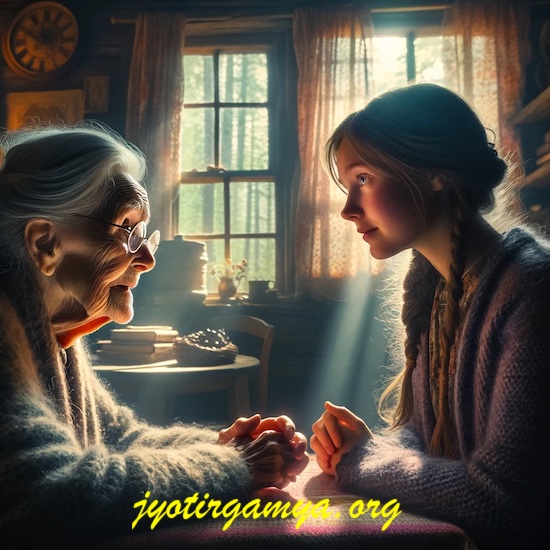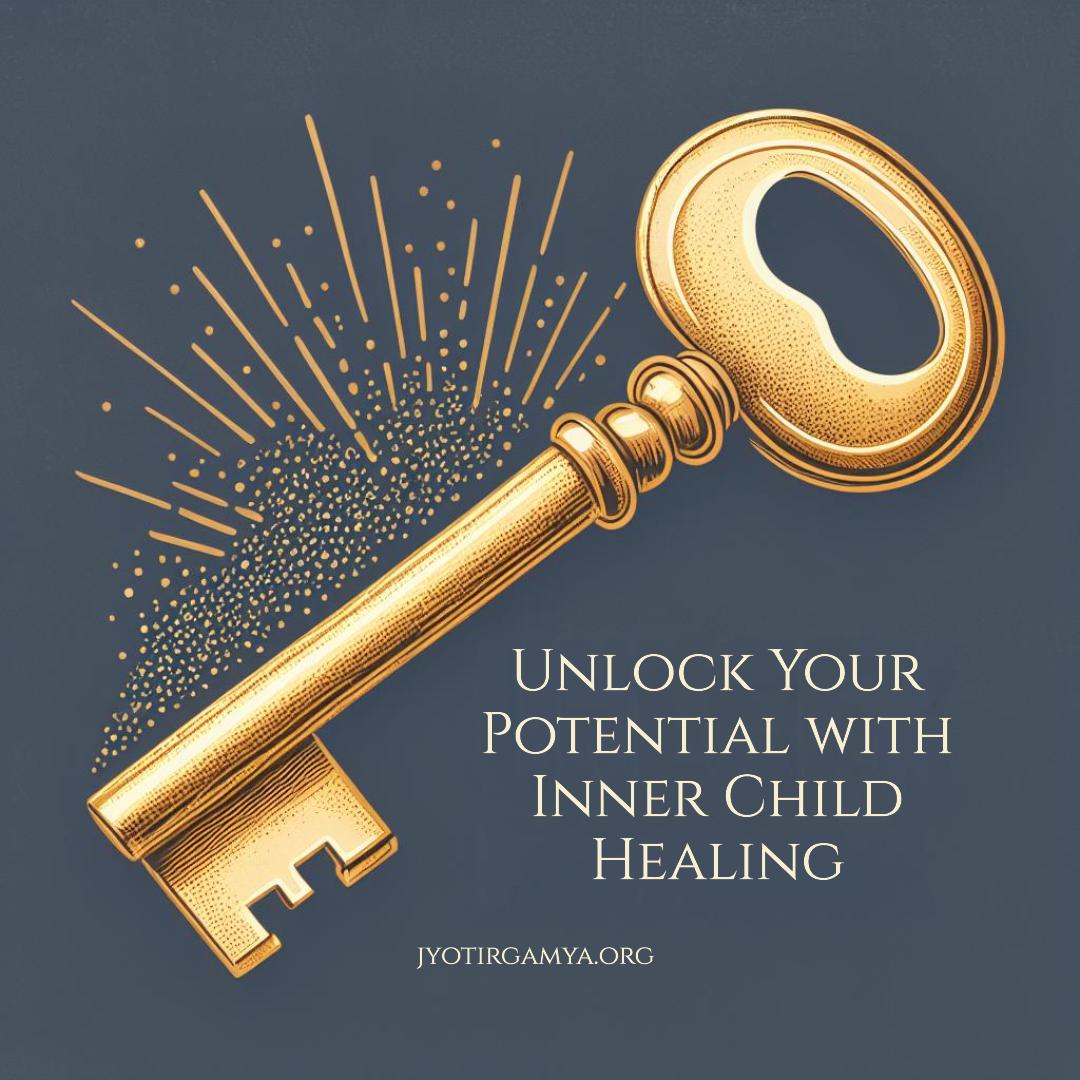Inner Child Healing: The Key to Unlocking Your Potential
Mapping of Heart: A Journey of Inner Child Healing
Emily was a super cartographer. She could even draw a whole town blindfolded! But secretly, she was scared of getting lost, even on streets she knew well. Her heart would race like a drum.
One sunny fall day, looking for ideas for a new map, Emily went into a hidden part of the woods. Sunshine peeked through the leaves, lighting a small open space with a giant, old oak tree in the middle. Feeling a strange pull, Emily touched the bumpy bark.

Suddenly, she saw a picture: a little girl crying, alone, under a droopy tree. This forgotten memory hit Emily hard, like a broken vase.
She realized her fear came from that day. Lost and scared, a little kid with no map. Emily wanted to feel better, so she went to find Willow, a woman who lived alone and supposedly understood what trees whispered.

Willow, with eyes as green as plants, listened carefully. “The oak tree woke up your memories,” she said, “but the answers are deep inside the woods.”
The trip was arduous. Thorns scratched her clothes, and roots made her trip. But with every challenge, Emily felt a little less scared. Finally, she reached the center of the woods - a sunny space with a magical glow.
Standing before her was a younger Emily, precisely like the scared child in her memory. Emily’s eyes filled with tears.
“I’m here for you now,” Emily whispered, holding her hand. The little Emily took a moment, then reached back.
When their hands touched, the space shimmered, and the child disappeared. Emily felt calm and peaceful, not scared anymore.

Willow was right. The actual map Emily needed wasn’t for the woods but for her feelings. Back at her workspace, Emily started making a new map—not of places and water, but of her emotions and memories—showing her journey from fear to feeling free.
It was funny in a way. The answer wasn’t on regular maps but on a hidden map inside her, unlocked by the old oak tree. It showed how facing the past can help you find your way.
Ever wonder why you react a certain way in situations?
Unexplained anxieties, low self-esteem, or relationship struggles could all be rooted in childhood experiences. This article explores the concept of the “inner child” and how unresolved issues from the past can impact one’s present well-being.
Experts in the mental health field, Dr. Mahima Sahi, Dawn Moscow, and Komal Chelani, will guide us through discovering and healing these inner child wounds. They’ll share valuable insights and techniques to help you achieve greater self-understanding and emotional balance.
Expert Opinions
Addressing and healing inner child issues is a vital aspect of mental health care. As a Psychologist with a focus on preventive mental health, my approach to dealing with inner child issues involves a blend of understanding, compassion, and therapeutic strategies.

A. Discovering Inner Child Issues
-
Reflect on Childhood Memories: Begin by recalling your childhood experiences. Look for recurring patterns or events that have impacted your emotional development.
-
Identify Triggers: Pay attention to situations that evoke strong emotional reactions. These might be linked to unresolved childhood issues.
-
Journaling: Writing about your feelings can help uncover hidden emotions about your inner child.
-
Therapeutic Guidance: A therapist can help navigate this discovery process, using techniques like narrative therapy to explore your childhood stories.
B. Dealing with Inner Child Issues
-
Validation: Acknowledge and validate the feelings of your inner child. Understanding that your emotions are valid is a crucial step.
-
Reparenting: Reparenting involves nurturing and comforting your inner child as an adult. It might include self-care practices, affirmations, and setting healthy boundaries.
-
Mindfulness and Meditation: These practices can help you stay grounded and connected to your present self, reducing the impact of past traumas.
-
Professional Therapy: Therapies like Cognitive Behavioral Therapy (CBT) and Solution-Focused Brief Therapy (SFBT) can be effective. They help reframe negative childhood narratives and focus on building a positive future.
-
Creative Expression: Activities like art therapy can provide a non-verbal outlet for emotions related to your inner child.
It’s essential to approach this process with patience and self-compassion. Healing the inner child can be transformative, leading to greater self-understanding and emotional well-being.
Be aware that inner-child work or “parts-work” does not focus on symptoms or Pathology but somewhat different aspects (or Parts) of an individual. Our day-to-day Language or phrases can include “one Part of me feels this, but the other part of me feels that.”
These parts serve different functions in helping the Individual navigate difficult emotions. One more thing: Some parts are protective and can relate to childhood abuse, neglect, or sometimes, ruptured relationships.
Many clients come to us with unexplainable cognitive, emotional, and behavioral symptoms. They may experience challenging emotions such as anxiety, fear, feelings of unsafety, worthlessness, loneliness, self-doubt, low self-esteem, and a lack of self-confidence. They may also exhibit unhealthy behaviors such as overthinking, procrastination, perfectionism, hyper-independence, overeating, negative self-image, existential crisis, trust issues, and difficulties in maintaining social, romantic, and family relationships.
These patterns often lack clear explanations, and this is where the concept of the inner child ego comes into play. The inner child represents our younger self—even if a day is smaller and younger, it is still our inner child. We continuously learn and grow each day, every moment. The inner child is a part of our subconscious mind that has been absorbing messages from its surroundings long before it can process and fully understand what is happening.
Within each of us resides a little one holding numerous emotions, memories, beliefs, hopes, and dreams. Our body and mind always seek to make us feel safe. In the past, some moments were difficult for us to understand and feel safe as young children because we were not emotionally and mentally mature or wise enough.
The inner child seeks to feel understood, accepted, loved, heard, seen, and safe—emotionally, mentally, and physically. Healing our inner child becomes essential. Our child’s ego developed patterns to manage situations and feel safe—these were our coping mechanisms, and some persist.
While some of these patterns were helpful in the past, they are no longer beneficial or healthy in the present. A few are self-defeating and restrict our growth. These patterns manifest as unexplainable cognitive, emotional, and behavioral symptoms that we can notice in ourselves as adults. Recognizing unlearning these patterns and building healthy coping strategies are crucial for overall growth and well-being.
There are ways to explore the roots of unexplainable symptoms and create positive change. Dealing with inner child issues alone would be risky. I suggest everyone reading this reach out to a trained psychologist to heal themselves. A skilled psychologist will establish a secure environment, use clinical strategies, and tailor the sessions to meet your needs.
Parting Thoughts
Unresolved childhood experiences can manifest as emotional and behavioral issues in adults. Experts agree that healing your inner child is vital for mental well-being.
You can discover your inner child’s unmet needs and hidden emotions through self-reflection, journaling, and professional guidance. Techniques like validation, self-care, and mindfulness can help heal these wounds. Therapy can provide tools to reframe negative thoughts and build a positive future.
Remember, this is a journey of self-compassion. Healing your inner child can lead to greater self-understanding, emotional well-being, and a more fulfilling life. Consider seeking help from a qualified therapist to begin your transformation.
Related Articles
If you like what we are doing, do spread the word.
Want to stay connected? Here’s our twitter.
Or subscribe to our monthly newsletter containing tools for body, mind, and goal.